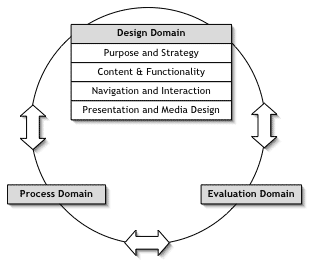Candidates Try Web Video, And the Reviews Are Mixed
By Jose Antonio Vargas
Washington Post Staff Writer
Saturday, March 17, 2007; A01
Sen. Hillary Rodham Clinton (D-N.Y.) posts regular "HillCasts" to talk about her positions on equal pay, health care and Iraq. Rudolph W. Giuliani treats YouTube as if it were C-SPAN -- a place for his 58-minute speech to the Churchill Club. Sen. Christopher J. Dodd (D-Conn.) put up a casual backstage interview before his appearance on "The Daily Show." And though Sen. John McCain (R-Ariz.) was the last of the presidential front-runners to jump on the online video bandwagon, he now has more than 25 videos circulating on the Web.
One after another, presidential campaigns are adding videos to their Web sites as well as to video-sharing sites such as YouTube, MySpace and Veoh. The reviews, however, are mixed. Production values are uneven -- a few videos look grainy; many are professionally produced; most seem downright misplaced. And so far, judging by the number of views on YouTube -- and the overall buzz on the blogosphere -- it's the candidate videos that the campaigns didn't make that get attention.
Not one of the videos made by John Edwards's campaign, for example, matches the popularity of the one showing the former senator combing his hair before an interview to the tune of "I Feel Pretty." That video has been viewed more than 135,000 times since it was posted on YouTube in November. Edwards's most popular official video, of his announcement in December that he's running for president, has been viewed about 116,000 times.
 Similarly, Clinton's most watched HillCast, titled " Roadmap Out of Iraq," comes nowhere close in popularity to the video showing her singing " The Star-Spangled Banner" off-key at a rally in Iowa. The HillCast has been viewed more than 15,000 times since it was posted on Feb. 17, the out-of-tune moment nearly 1.1 million times since its posting on Jan. 27.
Similarly, Clinton's most watched HillCast, titled " Roadmap Out of Iraq," comes nowhere close in popularity to the video showing her singing " The Star-Spangled Banner" off-key at a rally in Iowa. The HillCast has been viewed more than 15,000 times since it was posted on Feb. 17, the out-of-tune moment nearly 1.1 million times since its posting on Jan. 27.
As fans of Web video know, YouTube is a place of irreverence, spontaneity, humor. And for the most part, candidates are giving their online audience the opposite of what it wants. Just ask James Kotecki.
Several times a week, Kotecki, a self-described "political geek" turned YouTube celebrity, advises presidential candidates on their campaign videos -- from his dorm room at Georgetown University. Equipped with a three-year-old laptop, a $60 Web camera and a $30 microphone -- and a small, dusty desk lamp as a light source -- the 21-year-old dishes out free, unsolicited suggestions (and the occasional compliment) to the candidates.
For Giuliani: "All of your videos so far are just recordings of your speeches. And two of them are marathons, clocking in at 45 minutes and 58 minutes."
For Rep. Dennis J. Kucinich (D-Ohio): "The ivy background, I'm-outside-but-I'm-really-inside thing, doesn't strike me as overly presidential. I'd also encourage you to make your videos a bit more intimate by bringing the camera closer in to you."
For McCain: "Maybe it's time to post a funny video."
Kotecki has one recurring message to the candidates and their expensive media advisers: "The Web isn't TV." As in, Web viewers don't expect to be spoken to, they expect to be spoken with. It's a passive experience vs. an interactive one.
Other students of the genre have similar advice.
"Look at how the candidates are talking in their videos. With a few exceptions, they're mostly looking sideways, not talking directly to the camera," said Jeff Jarvis, who heads the interactive journalism program at the City University of New York's Graduate School of Journalism and started PrezVid.com, a blog dedicated to watching the campaign through YouTube. "The important thing about this medium is it's very human and intimate. A voter comes across and clicks on you. You should talk to that voter and look at him in the eye."
Micah Sifry, co-founder of TechPresident.com, another blog that looks at how the candidates are campaigning on the Web, also makes a distinction between video online and ads on television. "There's something fundamentally different about video online," he said. "Viewers are looking for that rare, unscripted, revealing moment, to get a little sense of who these candidates really are."
For campaigns, Web videos are an instant way to reach voters, whether on the candidates' sites or on YouTube, which this month created You Choose '08, a channel specifically for candidate videos. They are a way to present Clinton sitting on a couch, sans microphone. A way to hear McCain talk uninterrupted about "honor," "courage" and "faith" (each one is a video clip). They are giving candidates a face, a voice and, most important, a personality -- at least if done right.
So far, none of the official campaign videos have been used to attack a rival candidate. And while the videos tend to be similar, there are differences in approach.
Some candidates are employing a "less is more" mantra. New Mexico Gov. Bill Richardson, for example, currently has three videos on YouTube. For others, such as Mitt Romney, more is more. "We're doing as many different kinds of videos as possible -- videos of him giving speeches, testimonials from families, et cetera," said Stephen Smith, director of online communications for the former Massachusetts governor.
All of the campaigns, however, are still experimenting, watching each others' moves.
Christian Ferry, McCain's Web manager, says bluntly: "We're only at the very beginning here, and our videos are still evolving."
As an early model, Jarvis and Sifry both point to British politics and David Cameron, the leader of the Conservative Party. Last fall, Cameron launched WebCameron, which includes a series of short videos starring the 40-year-old father of three. His first video showed him washing the dishes at home, his baby screaming in the background.
Looking directly at the camera, standing in front of his sink, he says, "Watch out BBC and ITV, we're coming after you."
That was an off-the-cuff, unscripted moment -- or at least it appeared that way. To Sifry and Jarvis, it seemed "authentic," and therefore effective.
Yet as in vogue as online videos are, no one is sure of the impact they will really have. Or whether, in this Web-based, heavily fragmented mediasphere -- in which everybody is competing for shorter attention spans -- they will eventually replace TV spots, the bread and butter of campaign advertising.
"These videos are a giant step forward from saying, just three years ago, 'Here's our latest blog entry,' " said Jim Margolis, a veteran Democratic media strategist. "But are people going to get sick of them? You'll get 23 videos on your inbox and you'll delete them all? Who knows? I don't. This is all new."
In the meantime, Kotecki is a new critic for a new medium. He has recorded 42 videos in his dorm room since Jan. 27 -- often late at night, sometimes in the afternoon between his quantum physics and Introduction to Logic classes.
His YouTube channel has more than 400 subscribers, and his videos have been viewed more than 71,000 times. He makes up awards and bestows them on candidates; Romney earned one half of a "YouTube Savvy Award." He also makes sound effects -- "Ding!" -- and, on occasion, sings and raps.
 James Kotochi
James Kotochi
James' interests include 'Being quoted in the New York Times'Yesterday afternoon, Kotecki received his biggest reaction yet -- a video response from Kucinich himself, who called Kotecki "my adviser."
"I think you have some good suggestions," Kucinich told Kotecki, "and we're already taking them into account."
The video, only 50 seconds long, is a close-up shot.
 Watched Davina McCall's piercing look at the UK's abysmal Sex Education in schools on Friday. (Apparently the right-wing press had been creating "Outrage as Ch4 show gives condom lesson to youngsters." all the last week, passed me by ... )
Watched Davina McCall's piercing look at the UK's abysmal Sex Education in schools on Friday. (Apparently the right-wing press had been creating "Outrage as Ch4 show gives condom lesson to youngsters." all the last week, passed me by ... )









 The LA Wi-Fi network will be the single largest citywide network in the country providing wireless, cost-effective, high-speed internet access
The LA Wi-Fi network will be the single largest citywide network in the country providing wireless, cost-effective, high-speed internet access


























 @PubSecBloggers
@PubSecBloggers












